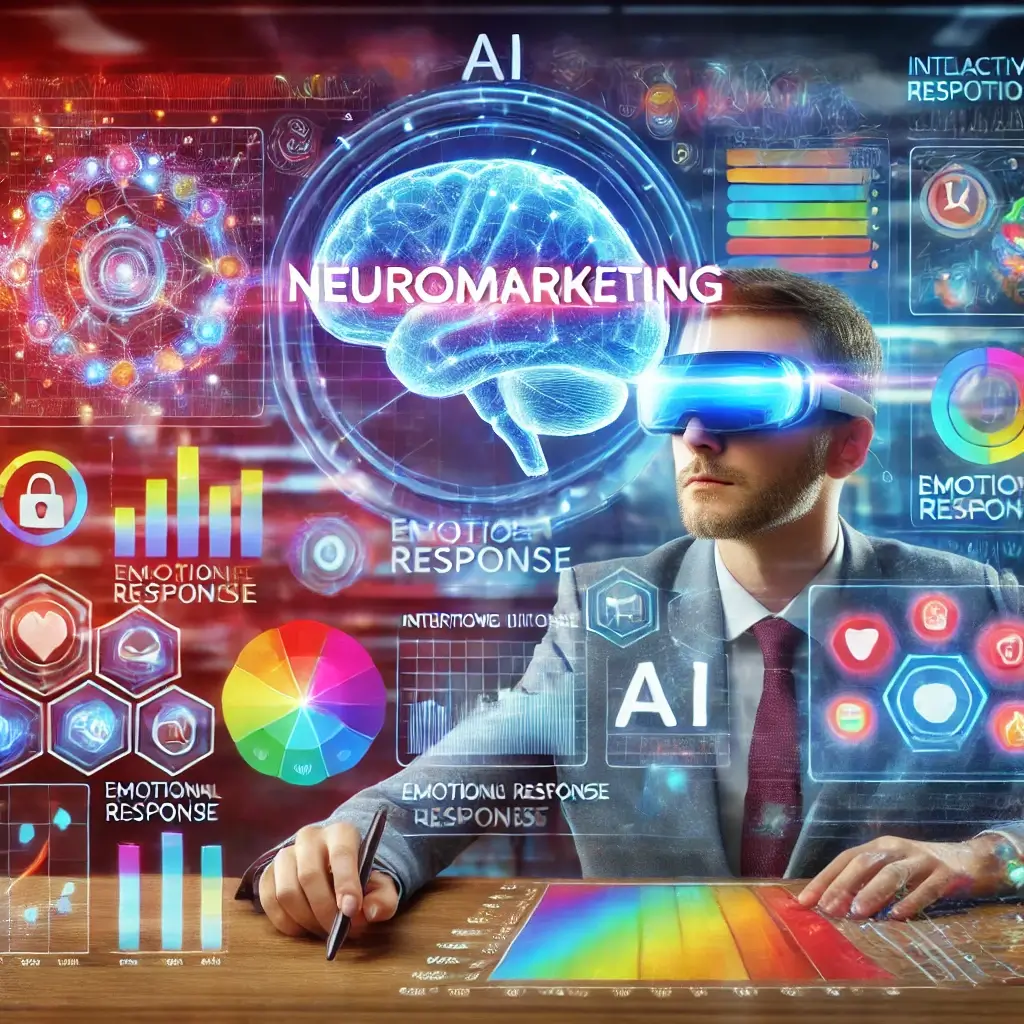Leveraging Neuroscience: How AI-Powered Neuromarketing Transforms Digital Campaign Performance
Decoding Consumer Behavior Through Scientific Approaches
In the ever-evolving digital marketing landscape, understanding consumer behavior has become both an art and a science. Neuromarketing, which combines neuroscience and psychology with marketing, offers a scientific approach to decoding consumer preferences. By analyzing how the brain responds to stimuli, marketers can design campaigns that are not only creative but also strategically aligned with human behavior.
The Technological Evolution of Neuromarketing in 2025
As technology continues to advance in 2025, neuromarketing is undergoing a transformation. The integration of AI tools enables real-time analysis of consumer data, providing actionable insights for personalized campaigns. For digital marketers, this means leveraging cutting-edge techniques to engage audiences more effectively and drive conversions.
Beyond Traditional Marketing: The Neuromarketing Paradigm Shift
Neuromarketing is more than just a trend; it is a paradigm shift that challenges marketers to think beyond traditional strategies. By focusing on how consumers perceive and react to digital content, neuromarketing allows brands to craft campaigns that are scientifically optimized for engagement. The ability to connect emotionally while delivering data-driven results marks the true power of neuromarketing.
Actionable Techniques for Measurable Marketing Results
This article outlines actionable neuromarketing techniques for improving digital campaigns. From crafting emotionally compelling content to enhancing user interfaces, these insights will empower marketers to achieve measurable results in their strategies.
The Power of Emotion in Marketing Content
Emotional storytelling can make or break a campaign. According to Nielsen’s 2024 report, emotionally engaging ads outperform logical ones by a wide margin. Key emotions like joy, surprise, and nostalgia are particularly impactful (Nielsen, 2024). Marketers who tap into these emotions can foster stronger connections and drive consumer actions.
Success Through Emotional Memory Connections
Case Study: A travel agency’s ad campaign featuring nostalgic family vacation moments led to a 45% increase in bookings. This example demonstrates how emotions tied to positive memories can inspire consumer actions and loyalty. Nostalgia, in particular, has proven to be a powerful driver for rekindling customer connections, especially in industries like travel, food, and entertainment.
Strategic Visual Elements for Enhanced Engagement
Visual elements play a crucial role in capturing and retaining audience attention. Eye-tracking studies indicate that users focus on vibrant colors and clear calls to action. The strategic use of visual cues can significantly enhance user engagement (Journal of Consumer Research, 2024). By understanding how visuals interact with cognitive and emotional responses, marketers can better align their designs with consumer expectations.
Transforming Engagement Through Visual Redesign
Example: A retailer’s homepage redesign with bold imagery and interactive CTAs resulted in a 25% spike in click-through rates. By aligning visuals with user preferences, the retailer improved overall campaign performance. This approach not only enhanced engagement but also reduced bounce rates by creating an inviting and intuitive browsing experience.
User Experience as a Neuromarketing Cornerstone
Neuromarketing highlights the importance of reducing cognitive load. Simplified navigation and intuitive interfaces can dramatically improve user satisfaction. The role of UX in neuromarketing cannot be understated as it directly impacts emotional responses and long-term customer retention (Gartner, 2023). Good UX is not just functional; it evokes trust and satisfaction, which are critical for conversion.
Meaningful UX Improvements Through Data Analysis
Case Study: An app developer streamlined its interface after heatmap analysis, leading to a 20% increase in user retention. This highlights how reducing friction in digital interactions contributes to better user experiences. For eCommerce platforms, simplifying the checkout process and minimizing distractions are key strategies that translate neuromarketing insights into tangible business outcomes.
Color Psychology in Modern Brand Strategy
Different colors evoke distinct emotions. Blue builds trust, red signals urgency, and yellow conveys happiness. By aligning color schemes with brand values, marketers can enhance brand perception and audience connection (Journal of Consumer Research, 2024). This technique is particularly useful in competitive markets where visual identity plays a pivotal role in differentiation.
Strategic Rebranding Through Color Psychology
Example: A tech startup’s rebranding with green hues emphasized innovation and sustainability, attracting eco-conscious consumers. This demonstrates how aligning color psychology with brand goals can improve consumer affinity. Additionally, testing color variations for CTAs, such as contrasting red against white backgrounds, has been shown to boost click-through rates by over 30%.
The AI Revolution in Personalized Neuromarketing
Artificial intelligence is redefining neuromarketing by enabling dynamic campaign adjustments based on real-time data. AI-driven tools analyze user behavior, preferences, and engagement patterns to deliver highly personalized content. This adaptability improves campaign relevance and effectiveness, particularly in industries where consumer needs are rapidly evolving.
The Future Landscape of AI-Powered Consumer Insights
Future Outlook: AI-powered neuromarketing is expected to expand its reach, offering businesses tools to predict consumer needs and behaviors with greater precision. For instance, AI can now integrate sentiment analysis from social media to fine-tune ad copy and design elements in real time. As this technology evolves, marketers must stay informed to maintain a competitive edge.
Embracing Neuromarketing for Business Success
Neuromarketing is an invaluable tool for modern marketers. By applying these techniques, businesses can create campaigns that resonate emotionally and function effectively. Emotional triggers, visual optimization, enhanced UX, and strategic use of colors are key components of a successful strategy. Additionally, the integration of AI with neuromarketing insights has introduced unprecedented levels of personalization and adaptability.
Building Stronger Customer Relationships Through Neuroscience
Marketers who embrace neuromarketing as part of their digital strategy can expect not only improved engagement metrics but also deeper customer loyalty and stronger brand advocacy. The fusion of neuroscience and AI promises exciting possibilities for future innovations in this field, making it essential for forward-thinking marketers to leverage its full potential.
Research-Backed Marketing Strategies
References
Nielsen. “The Impact of Emotional Advertising on ROI.” Published 2024. Link.
Gartner. “Neuromarketing Insights for Enhanced UX.” Published 2023. Link.
Journal of Consumer Research. “Color Psychology in Marketing.” Published 2024. Link.
